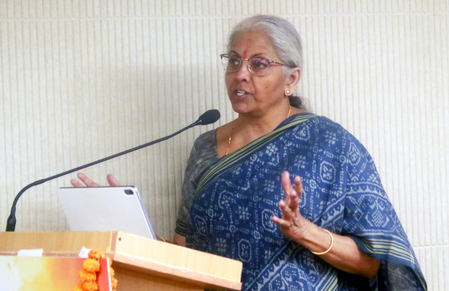New Delhi, 14 June (IANS). Finance Minister Nirmala Sitharaman said on Saturday that under the vision of Prime Minister Narendra Modi, structural reforms in the last 11 years have given a new shape to India’s comprehensive economic infrastructure.
The Finance Minister wrote in a media article that India’s emergence as the fastest growing major economy is based on many favorable factors. It is also closely connected with strengthening the balance sheet of the major sectors of the economy such as banks, corporates, families, government and external sector.
Finance Minister Sitharaman wrote in a post on the social media platform X, “The change of Indian economy in the last 11 years is a result of concrete policy efforts under the leadership of PM Modi to change from ‘Twin Defisit Problem to Five-Balance Sheet Benefits’.
He further stated that “When we came to power in 2014, our first priority was to revive development. During the years of GST, IBC, RERA and epidemic, structural reforms such as PLI schemes and ECLGS were introduced, so that credited MSMEs could help to overcome corona.”
The Finance Minister said in his article that capital investment in FY 2013-14 increased from 1.7 percent of GDP to 3.2 percent in FY 2024-25.
In 11 years, 88 airports were operated, 31,000 km of railway tracks were laid, the metro network expanded more than four times, the port capacity doubled and the national highway length increased by 60 percent.
The Finance Minister also informed about the significant progress in India’s poverty alleviation in his article. Citing the latest data of the World Bank, he said that India has progressed in reducing its excessive poverty rate in the last decade and the excessive poverty rate in the country has been reduced from 27.1 percent in 2011-12 to 5.3 percent in 2022-23.
According to the Finance Minister, from the Digital Payment Revolution launched by UPI to the craving of entrepreneurship manifested by the currency loan, the last 11 years have shown that our economy can touch new heights when we combine the trust-based governance with the lack of regulator burden and the expansion of public goods.
-IANS
SKT/






